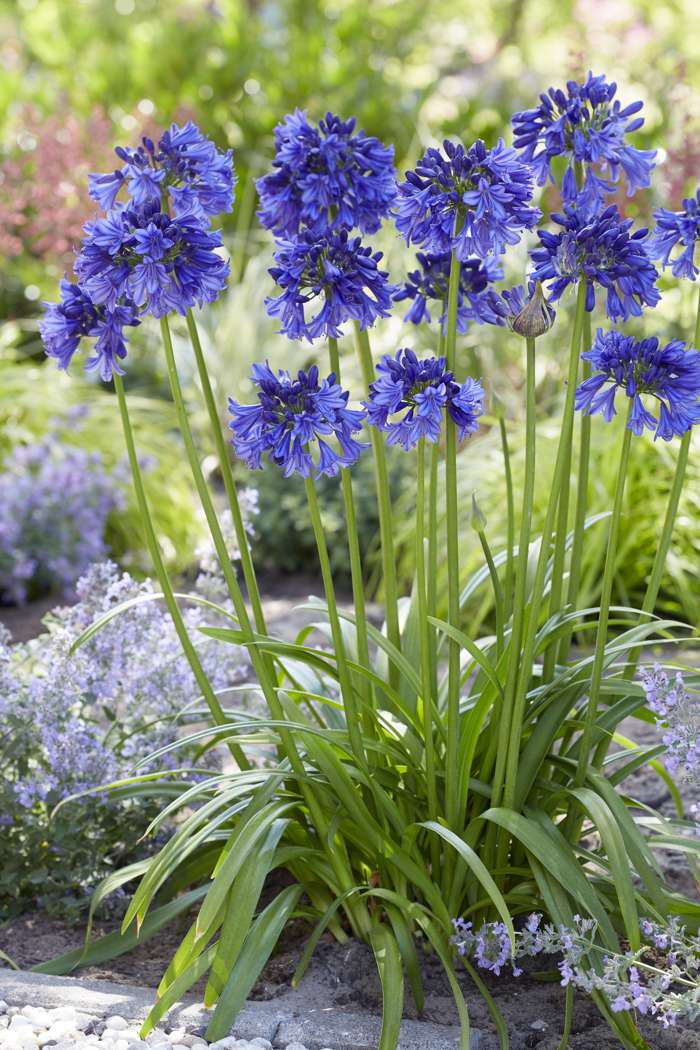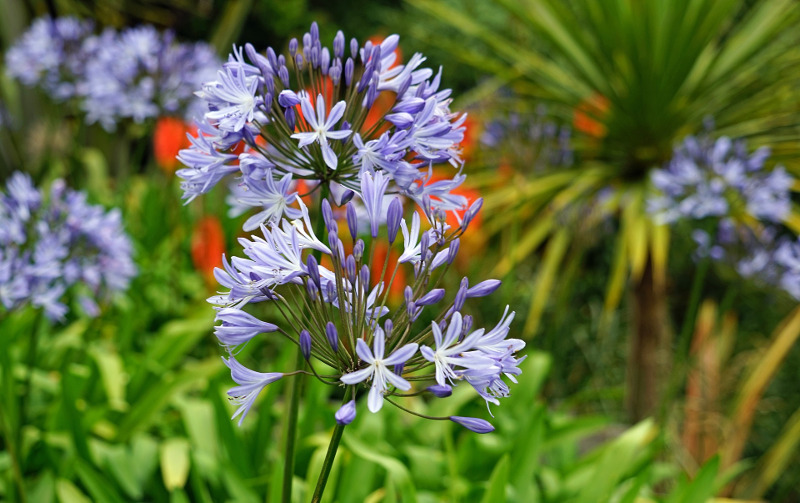Understanding the Art of Agapanthus Treatment: Necessary Steps for Healthy Development and Lively Flowers
In the world of cultivation, the growing of agapanthus stands as a rewarding venture for those who seek to support these sophisticated blooming plants. With their striking blossoms and stylish vegetation, agapanthus has actually captured the interest of garden enthusiasts worldwide. However, attaining optimal development and vivid blooms requires a nuanced method that incorporates numerous necessary actions. From choosing the best variety to grasping pruning techniques, the trip towards growing thriving agapanthus plants is multifaceted and holds the key to opening the full potential of these herb gems.

Selecting the Right Agapanthus Variety

When selecting the ideal Agapanthus selection for your garden, take into consideration elements such as environment viability, bloom shade, and development habit. In addition, consider the environment in your region to ensure the Agapanthus selection you select can prosper in your certain problems. Understanding the development routine of various Agapanthus varieties is important for proper placement within your yard.
Ideal Growing Problems
Thinking about the optimal environmental needs is crucial for effective Agapanthus growing. Agapanthus flourishes in well-draining dirt with a slightly acidic to neutral pH level. When planting, pick an area that obtains complete sunlight to partial color. In hotter climates, offering some afternoon shade can prevent scorching of the fallen leaves. Agapanthus plants are sensitive to cool temperature levels and ought to be secured from frost throughout winter season.
To make certain healthy and balanced growth and vivid blossoms, plant Agapanthus bulbs at a depth of concerning 2-4 inches and space them 8-12 inches apart. Mulching around the base of the plants assists keep dampness and reduces weed development.
Watering and Fertilizing Tips
Keeping appropriate moisture degrees and giving essential nutrients are crucial elements in the care regimen for Agapanthus plants. It is crucial to strike an equilibrium when it comes to watering Agapanthus. These plants like constantly wet dirt however are at risk to root rot if overwatered. Throughout the expanding period, water deeply as soon as a week, making certain the dirt is well-draining to avoid waterlogging. In hotter climates or during periods of drought, more regular watering may be essential to keep the dirt uniformly wet. However, reduce watering in the winter season to stop waterlogged problems.
Fertilizing Agapanthus is crucial for advertising healthy development and respected blooms. Use a balanced fertilizer, such as a 10-10-10 formula, in the early spring as brand-new growth emerges. Repeat this use this link application every 6-8 weeks throughout the growing season. Prevent extreme fertilizing, as it can result in lavish foliage at the expense of blossoms. Always comply with the manufacturer's instructions for appropriate dilution and application methods. By adhering to these watering and feeding ideas, you can guarantee your Agapanthus plants grow and create dynamic, durable flowers.
Pruning Techniques for Agapanthus
Pruning Agapanthus plants at the appropriate times and with appropriate methods is critical for preserving their wellness and promoting ideal growth and blooming. The ideal time to prune Agapanthus is in late winter or early springtime before new growth arises.
Deadheading invested flowers can additionally redirect the plant's power right into generating more blossoms rather than establishing seeds. If you desire to collect seeds for proliferation, leave some blossoms to fully grown and dry on the plant.
Bear in mind to make use of clean, sharp devices to make precise cuts and lower the threat of read the article presenting conditions. Agapanthus. Regular pruning will assist keep your Agapanthus looking cool and healthy while ensuring a plentiful screen of lovely flowers
Taking Care Of Typical Insects and Illness
After guaranteeing correct trimming methods for Agapanthus, it is important to address common pests and conditions that can influence the health and vigor of these plants. One usual pest that affects Agapanthus is the Agapanthus gall midge.
Furthermore, Agapanthus plants can suffer from root rot if they are planted in poorly draining soil. By being watchful and taking punctual activity versus conditions and insects, you can help your Agapanthus plants flourish and create lively blossoms. Agapanthus.

Conclusion
In verdict, understanding the art of agapanthus care entails selecting the best variety, providing perfect planting conditions, correct watering and fertilizing, suitable trimming strategies, and addressing typical insects and conditions. By complying with these necessary actions, you can make certain healthy and balanced growth and vibrant blooms for your agapanthus plants. Remember to routinely check and keep your plants to promote their general health and longevity.
To make sure healthy growth and dynamic flowers, plant Agapanthus bulbs at a deepness of concerning 2-4 inches and area them 8-12 inches apart. By following these watering and fertilizing pointers, you can ensure your Agapanthus plants thrive and produce dynamic, resilient blooms.
One typical parasite that affects Agapanthus is the Agapanthus gall midge. Furthermore, Agapanthus plants can experience have a peek at these guys from origin rot if they are grown in poorly draining pipes dirt. By complying with these important actions, you can ensure healthy and balanced growth and vibrant blossoms for your agapanthus plants.